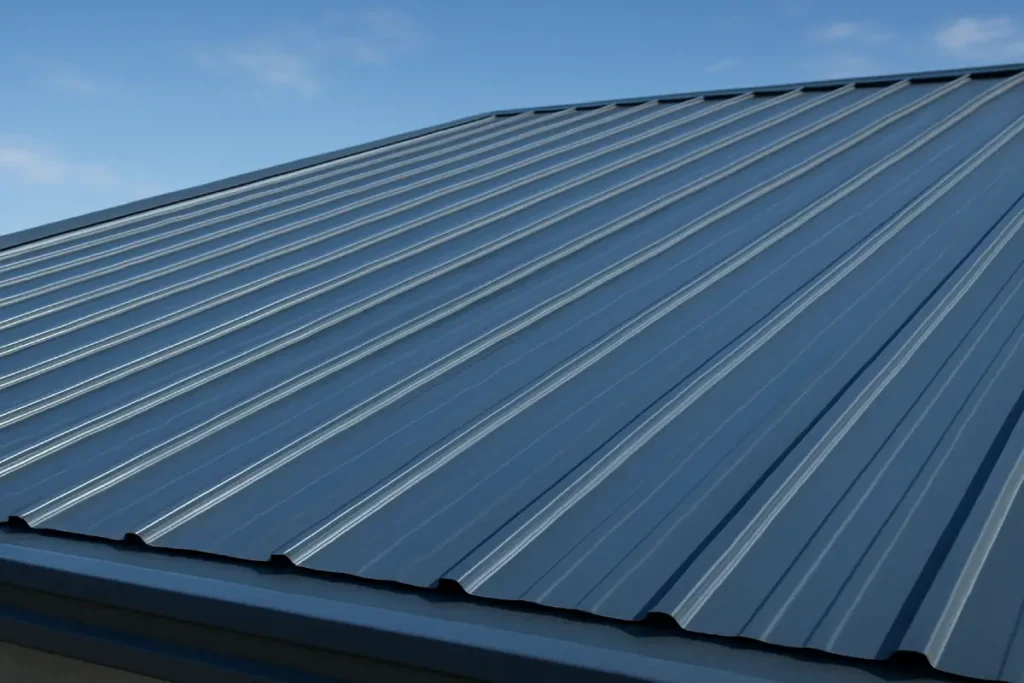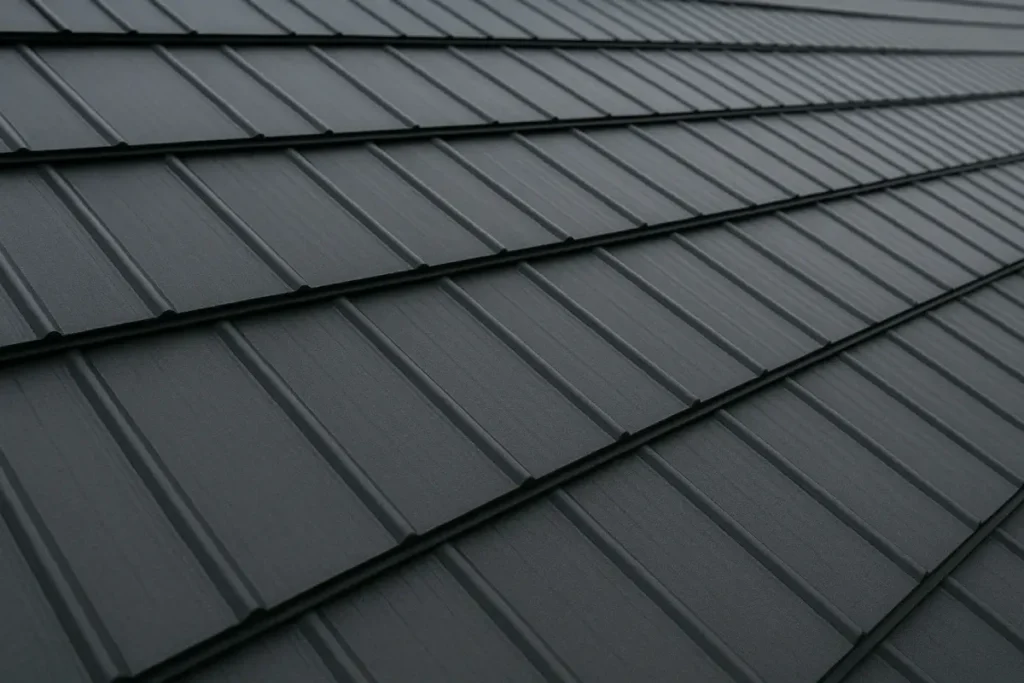Homeowners should weigh Roof Maxx pros and cons before committing to costly roof replacements, as new roofs have become expensive. As a roofing professional, I’ve helped countless homeowners make tough choices about their roofs. Roof Maxx treatments can add up to 15 years to your asphalt shingle life at just 20% of replacement costs.
Consumer reports show some impressive benefits and clear limitations of Roof Maxx. The average application costs $2,000 to $2,400. This plant-based, eco-friendly solution breathes new life into aging shingles. The treatment costs much less than a full replacement, but you should look carefully at the cost breakdown first. You’ll need to reapply the treatment every five years. The product works only on asphalt shingle roofs, which frustrates owners of other roofing materials.
The treatment helps avoid the environmental effects of tearing off and disposing of old shingles. That’s a huge plus. But you should know about some legal problems that have popped up in certain areas. Let’s explore if this innovative roof treatment lives up to its promises or falls short of what you might expect.
What is Roof Maxx and How does It Work?
Asphalt roofs lose their flexibility and become brittle as they age. Roof Maxx offers a solution to this common problem. I’ve looked at Roof Maxx’s pros and cons firsthand, and it’s a spray-on treatment that works on asphalt shingle roofs with signs of wear. This innovative product brings back the oils lost from weather exposure and makes your roof last longer without the big cost of replacing it.
The Science Behind Roof Maxx
Roof Maxx works on a simple but effective principle. The sun’s heat and photo-oxidation age asphalt roofing, pushing summer roof temperatures above 132°F. Your shingles gradually lose their petrochemical oils during this process. These oils are crucial – they keep shingles flexible enough to expand and contract with daily temperature changes. The shingles crack easily once these oils are gone.
Roof Maxx fixes this with its plant-based micro-penetrant bio-oil emulsion. Regular roof coatings just sit on top of the mineral layer. But Roof Maxx goes deep into the waterproofing asphalt layer. The formula comes from soybean oil (soy methyl ester) and restores the original oils that dried out, making shingles flexible again. Your roof can now expand and contract naturally without cracking.
Ohio State University research backs these claims. Their tests showed treated shingles became more flexible than untreated ones. The study also found Roof Maxx helped shingles hold their granules better, reducing losses by about 46%. Repeated treatments could add up to 15 years to your roof’s life, though some customers say the results didn’t meet their expectations.
What Makes It Different from Other Treatments
Roof Maxx stands out from typical roofing treatments and full replacements in several ways. The solution is completely non-toxic and food-grade, so it’s safe for people, pets, plants and the environment. The USDA has recognized it as a BioPreferred product, giving it an edge over competing products.
The treatment takes just 1-3 hours instead of the days needed for a complete roof replacement. You’ll see a milky white residue at first, but it goes away in 30 minutes. Unlike elastomeric and urethane roof coatings that seal everything, Roof Maxx lets your roof “breathe” naturally by absorbing and releasing moisture.
Money is one of the biggest reasons homeowners choose Roof Maxx. A new roof typically costs $20,000 to $30,000 for an average home. Roof Maxx costs just a fraction of that – about 20% of replacement costs according to their website. These savings make it worth thinking about when you’re deciding on roof maintenance.
The environmental benefits are worth noting too. Roof Maxx helps keep old roofs out of landfills. Only about 9% of asphalt shingles get recycled, so extending your roof’s life helps the environment, even with their legal challenges in some markets.
Roof Maxx pros: What are the Benefits?
Perusing the Roof Maxx pros and cons shows many advantages for homeowners who face costly roof replacement decisions. My experience as a roofing professional tells me this treatment has compelling benefits you should think about if you have an aging asphalt shingle roof. Let me share the most important advantages of this innovative product.
1. Cost-effective Compared to Full Replacement
The financial savings are one of the most compelling aspects when looking at Roof Maxx pros and cons. You’ll pay about 15-20% of a complete roof replacement cost for this treatment. A new roof typically costs $20,000 to $30,000. The Roof Maxx treatment for an average 2,000-square-foot home costs between $3,000 and $6,000. These numbers make it an attractive choice for budget-conscious homeowners.
Homeowners with smaller roofs or solar panels might pay even less – as little as 10% of replacement costs. Many homeowners report paying around $4,000 for Roof Maxx treatment instead of $20,000 for a new roof. This leaves more money for other home improvements.
2. Eco-friendly and Plant-based Formula
Roof Maxx uses a 100% natural plant-based bio-oil that’s non-toxic. The formula doesn’t contain solvents, VOCs, or harmful ingredients. Your family, pets, plants, and cars stay safe.
The USDA recognized this soy-based formula as a Bio-Preferred product. Roof Maxx helps reduce landfill waste by making roofs last longer. Millions of tons of asphalt shingles end up in landfills each year. This environmental benefit stands out in Roof Maxx pros and cons consumer reports.
3. Quick and Non-invasive Application
A new roof takes a week or more to install. Roof Maxx application takes just 30 minutes to a few hours, based on your roof’s size and condition. Your daily routine stays largely undisturbed.
Technicians spray the treatment evenly on your roof surface. The product needs 30-60 minutes to soak into the asphalt. Your roof gets rejuvenated without the noise, mess, and hassle of traditional replacement.
4. Can Extend Roof Life up to 15 Years
The lifespan extension is a standout benefit among Roof Maxx pros and cons. One application adds about five years to your roof’s life. Three treatments (one every five years) could extend your asphalt roof’s lifespan by up to 15 years.
Research from Ohio State University backs these benefits. The treated shingles showed:
- 46% reduction in granule displacement
- 60% improvement in permeability
- 24% decrease in hail damage
These improvements help shingles handle daily expansion and contraction while resisting harsh weather better.
5. Comes with a 5-year Transferable Warranty
Each Roof Maxx treatment has a five-year warranty that guarantees treated shingles will stay flexible. Your Certified Roof Maxx Dealer will retreat affected areas on a prorated basis if flexibility decreases during this time.
The warranty’s transferability adds value. New owners inherit the warranty if you sell your home during the coverage period. This might make your property more attractive to buyers. The warranty stays valid even if your manufacturer’s warranty expires due to time or transfer restrictions. Some customers note it doesn’t cover leaks or issues unrelated to shingle flexibility.
These benefits consistently stand out in my analysis of Roof Maxx pros and cons. Like any product, it has limitations that might affect its suitability in certain situations. I’ll explore these in our discussion of their legal issues and potential drawbacks.

Roof Maxx Cons: What are the Drawbacks?
A roofing professional’s analysis reveals several drawbacks that you should think about before deciding on Roof Maxx. What it all means for you depends on your specific situation.
1. Needs Reapplication Every 5 Years
Roof Maxx doesn’t last forever. Each treatment extends your roof’s life by about 5 years, so you’ll need multiple applications to get the most benefit. Homeowners who want a “fix it and forget it” solution might find it inconvenient to schedule treatments every 5 years. The recurring costs add up over time and should be part of your long-term evaluation. You must stick to regular maintenance schedules to keep your roof protected.
2. Limited to Asphalt Shingle Roofs
Roof Maxx works only on asphalt shingle roofs. Homeowners with metal, tile, slate, or other materials can’t use this treatment. This leaves out much of the housing market from benefiting from this solution. Your options become more limited when you look at the cost breakdown of different roofing solutions.
3. May not Address Deeper Structural Issues
Roof Maxx makes your shingles flexible again but doesn’t fix why problems happen. The treatment can’t repair leaks, fix structural damage, or solve issues with the roof deck or underlayment. We focused on restoring shingle flexibility rather than fixing all roofing problems. Your roof might need more than just Roof Maxx if it has serious issues. Legal problems sometimes start because people don’t understand this limitation.
4. Insurance Companies may not Recognize It
Insurance carriers don’t always trust Roof Maxx treatments. Consumer reports show that some providers look at properties through satellite images and might cancel policies on older roofs whatever the treatment status. You might get better insurance rates with Roof Maxx, but nothing’s guaranteed. This creates uncertainty for homeowners who hope to keep their coverage while putting off replacement.
5. Effectiveness Depends on Roof Condition
The treatment works differently based on your roof’s current state. Roofs with bad underlayment, active leaks, failed bond lines (usually after 15 years), or major structural damage don’t make good candidates. Customer complaints often come from applying Roof Maxx to roofs that weren’t suitable. The treatment needs temperatures above 36 degrees Fahrenheit and mostly dry weather to work properly, which limits when and where you can use it.
Roof Maxx vs Traditional Roofing Options
The right long-term roofing solution requires a careful look at all available options. My experience of installing thousands of roofs has taught me a lot about Roof Maxx’s advantages and disadvantages compared to traditional options in today’s market.
Cost Comparison with Full Roof Replacement
Roof Maxx and complete roof replacement show a huge difference in costs. A standard roof replacement costs between $10,000-$20,000. Labor makes up about 60% of these total expenses. Roof Maxx treatment costs just 15-30% of what you’d pay for a replacement. Let’s look at real numbers – a roof needing a $12,000 replacement would need less than $2,500 for Roof Maxx treatment. Budget-conscious homeowners should really think over these numbers. Multiple applications every five years still keep the total cost lower than a full replacement.
Roof Maxx vs Copper Strip Method
Copper strips offer another way to extend your roof’s life. These strips release copper ions when it rains to naturally stop moss and algae growth. Roof Maxx focuses on making shingles flexible, while copper strips target organic growth prevention specifically. The strips need exact placement near the ridge line but protect your roof for decades without more treatments. Consumer reports show copper’s guaranteed effectiveness makes it worth looking into, even though some customers complain about Roof Maxx’s mixed results in humid areas.
DIY Sprays vs Professional Application
DIY roof treatments might save money upfront but don’t match professional Roof Maxx application. These products usually just waterproof temporarily and don’t fix shingle condition. Professional Roof Maxx service comes with proper preparation, exact application rates, and warranties. People who apply products themselves risk uneven coverage and might create esthetic problems. Legal problems usually start because DIY applications don’t meet expectations.

Is Roof Maxx worth it? A Consumer-focused Verdict
You need a full picture of your roof’s condition to decide if Roof Maxx is worth your money. I’ve looked at hundreds of roof treatments and learned that the pros and cons of Roof Maxx change substantially based on your roof’s condition and situation.
When Roof Maxx Makes Sense
Roof Maxx works best with asphalt shingles that show early aging signs but remain structurally sound. Roofs between 5-10 years old are the best candidates for treatment. The treatment has worked well even on roofs over 20 years old.
The numbers tell us that Roof Maxx costs about 15-20% of what you’d pay for replacement. This makes it a great option if you need more time to save up for a new roof. People who care about the environment love that Roof Maxx keeps shingles out of landfills and brings back their flexibility.
When to Think about Other Options
Roof Maxx doesn’t work for every situation. Your roof won’t benefit from just treatment if it has structural damage, lots of leaks, or badly worn-out shingles. You might need a traditional replacement if your shingles have lost most granules or show lots of curling and cracking. Be careful if you have insurance concerns.
Some insurance companies don’t trust treated roofs and might cancel your policy. Legal problems often pop up because of these insurance issues and confusion about what the treatment actually fixes.
Roof Maxx Pros and Cons Consumer Reports Insights
Customer feedback gives us a real-life look at the results. Most people who complain misunderstand what the product does rather than having issues with how it works. Consumer reports show that Roof Maxx works best during certain times of the year with proper prep work.
The 5-year transferable warranty makes many homeowners feel secure because it stays valid even after the manufacturer’s original warranty expires. Each homeowner needs to weigh Roof Maxx’s pros and cons based on their roof’s shape and long-term property plans.
Roof Maxx Pros and Cons Frequently Asked Question
How long does a Roof Maxx treatment last?
A Roof Maxx treatment typically lasts for about 5 years. After this period, reapplication is necessary to maintain the benefits of the treatment.
Is Roof Maxx suitable for all types of roofs?
No, Roof Maxx is specifically designed for asphalt shingle roofs. It’s not suitable for other roofing materials such as metal, tile, or slate.
How much does Roof Maxx cost compared to a full roof replacement?
Roof Maxx generally costs about 15–20% of what a full roof replacement would cost. For an average home, this could mean spending around $2,000–$4,000 for Roof Maxx treatment instead of $20,000–$30,000 for a complete roof replacement.
Can Roof Maxx fix existing roof damage?
Roof Maxx is designed to rejuvenate and extend the life of asphalt shingles, but it cannot repair structural damage, fix leaks, or address issues with the roof deck or underlayment. It’s primarily focused on restoring flexibility to the shingles.
Is Roof Maxx environmentally friendly?
Yes, Roof Maxx is an eco-friendly solution. It uses a 100% natural, plant-based bio-oil that’s non-toxic and safe for people, pets, and plants. It also helps reduce roofing waste in landfills by extending the life of existing roofs.
How soon can you apply Roof Maxx after a new roof installation?
Roof Maxx is typically recommended for roofs that are at least 6–8 years old, depending on weather exposure. New roofs do not benefit from the treatment since the shingles haven’t yet started to dry out or lose their flexibility.
Can Roof Maxx be applied in cold or rainy weather?
Roof Maxx should be applied during dry weather conditions and when temperatures are above 36°F (2°C). Applying it during rain or freezing temperatures can reduce its effectiveness and prevent proper absorption.
Will Roof Maxx change the appearance of my shingles?
Yes, Roof Maxx can slightly darken the color of your shingles, giving them a refreshed look. However, it does not drastically change the appearance or style of the roofing material.
How long does the Roof Maxx application process take?
The application typically takes 1–2 hours for an average-sized home. The roof is first cleaned and inspected, followed by the spray treatment, which dries within 30 minutes.
Is there a warranty for Roof Maxx treatments?
Yes, each Roof Maxx treatment comes with a transferable 5-year warranty that covers the performance of the product. Additional treatments can extend the coverage up to 15 years.
